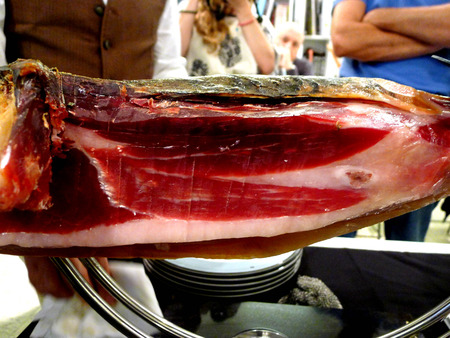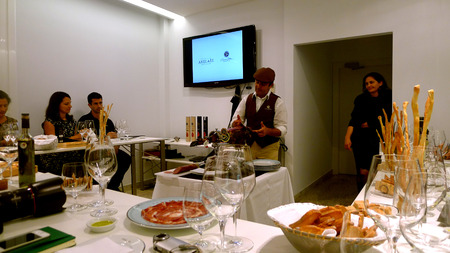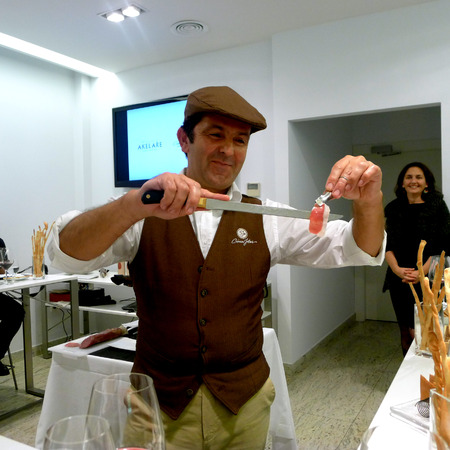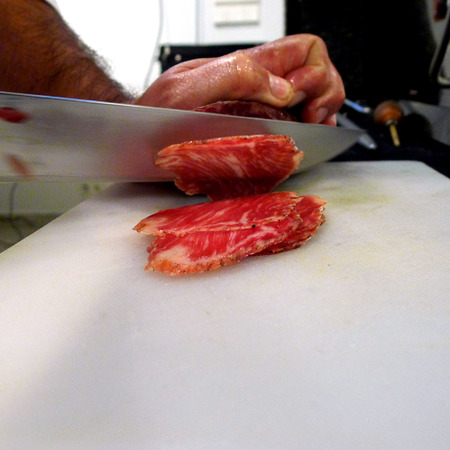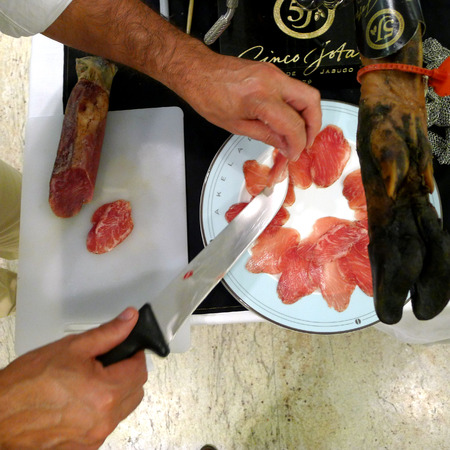How To Choose A Leg of Jamón Ibérico
It could very well be the circles I run in, but a problem I've often felt the weight of is how do you choose the best leg of jamón ibérico?
Yes, I feel lucky to ask myself this question. But after that initial 'I live a ridiculous life' feeling, I still am faced with racks on racks of cured pork leg.
When you are called to one of the world's best restaurants for a Cinco Jotas jamón workshop that promises to give you just such porcine insight, you don't say no. You grab your taxi fare and your camera and realize that in your excitement you forgot to say yes.
5J is one of the most respected jamón producers, and with good reason: they've been making star-quality jamón for nearly 150 years in the region most apt for doing so, Jabugo in Huelva. The dry, warm climate makes it the kind of place made for hanging ham legs to cure.
At this tasting, we had one of their (refreshingly humble) maestros in, carving a ham leg for us and answering burning ham questions. And showing off his ability to carve ham to the perfect thickness, where the knife is visible behind it.
He also gave us tips on how to choose the perfect leg of jamón.
Your first clue is sight:
- The "ankle" should be thin.
- The "foot" should be black and show signs of wear. Both of these above are a sign that this pig has been walking, running, and romping about in nature, which is good for flavor and quality.
- The "leg" should have an elongated shape.
Another way to determine quality is touch:
- When you press with both thumbs on the upper, larger end, it should give a bit. If it is too hard to give, that is not a good sign.
- Once you begin to carve the ham, this same action of pressing and rubbing your thumbs along the ham should leave a shiny, slick fat coating on your thumbs (yum, no?). If it is sticky, that is another bad sign.
And once you buy your ham, don't forget these important keys:
- The perfect temperature for storage is between 14 and 17º C. That's 57º-62º F.
- Clean the outside of the ham as you go consuming it so that only a bit of the yellow fat remains.
At the tasting, we also got to sample Cinco Jotas' new artisan lomo, a cured pork loin from the same acorn-fed happy pigs that brought you the traditional jamón leg. Using a recipe from one of the townspeople, which curiously enough omits paprika, 5J perfected it and began to produce this incredible piece of charcuterie. The nutty, toasted flavor shines through without the interrumption of the paprika, and this is truly one beautiful piece of meat. You can check it out here.
Leave me any questions you have about jamón and Spanish cured meats below and I will do my best to get the experts to weigh in!

